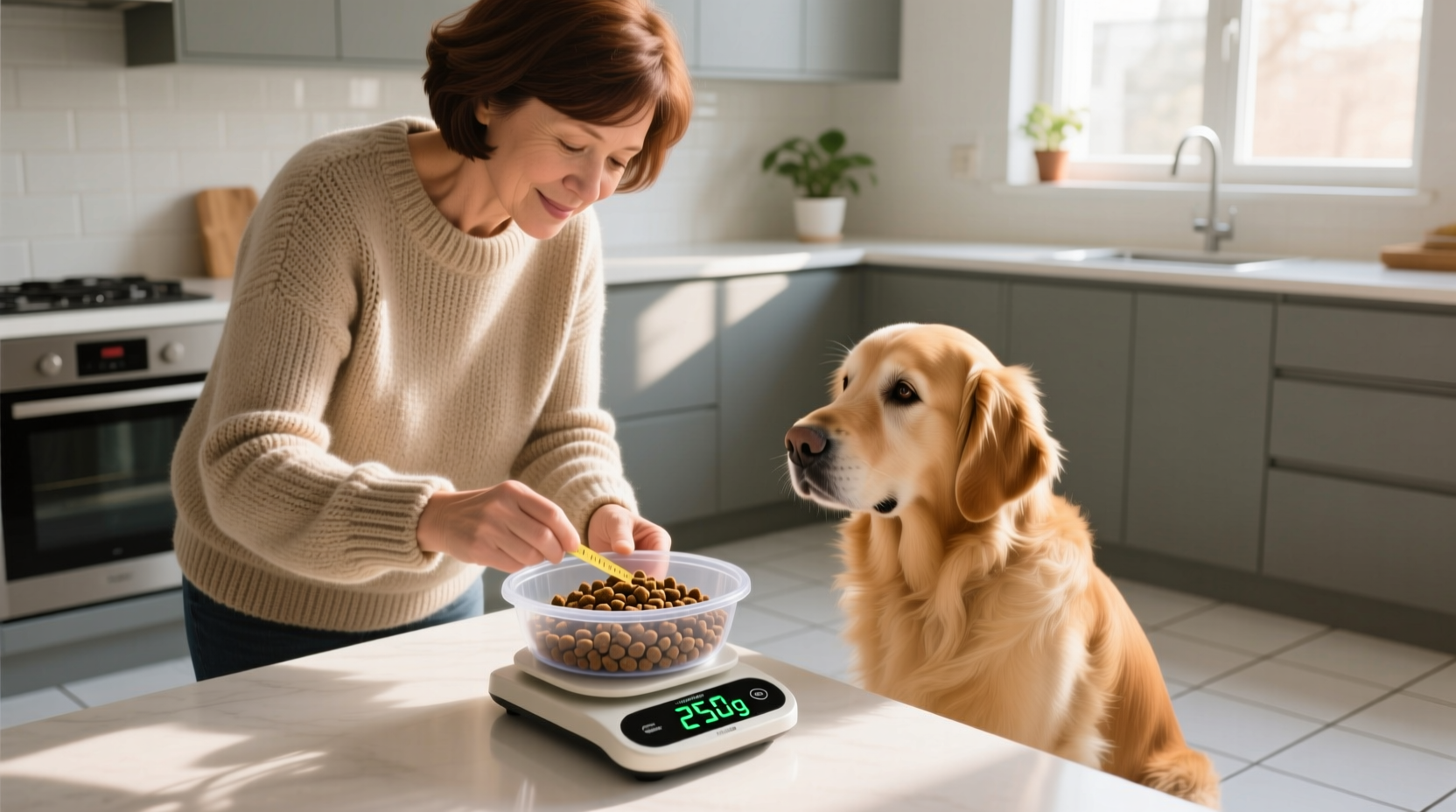Most adult dogs need 20-30 calories per pound of body weight daily, but the exact amount varies by age, size, activity level, and health status. Puppies require 40-50 calories per pound, while senior dogs often need 20% fewer calories. Always check your dog food's calorie content and adjust portions accordingly—never rely solely on bag recommendations.
Understanding Your Dog's Unique Nutritional Requirements
Feeding your dog the right amount isn't just about filling a bowl—it's about supporting their long-term health and vitality. Many pet owners mistakenly follow generic feeding charts on dog food bags, not realizing these are broad estimates that don't account for individual factors. The American Veterinary Medical Association reports that 59% of dogs in the United States are overweight, largely due to improper portion control.

How to Calculate Your Dog's Perfect Daily Food Amount
Forget one-size-fits-all recommendations. Your dog's ideal food intake depends on several key factors that work together. Here's how to determine the precise amount:
Step 1: Calculate Daily Calorie Needs
Use this veterinarian-approved formula:
- Adult dogs: 20-30 calories per pound of ideal body weight
- Puppies (up to 4 months): 40-50 calories per pound
- Senior dogs: 20% fewer calories than adult maintenance needs
Step 2: Convert Calories to Measuring Cups
This is where most owners go wrong. Dog food calorie density varies significantly between brands and formulas. Always check the 'Guaranteed Analysis' panel on your bag for calories per cup.
| Dog Weight | Calorie Range | Typical Cups (350 cal/cup) | Typical Cups (450 cal/cup) |
|---|---|---|---|
| 10 lbs | 200-300 kcal | 0.6-0.9 cups | 0.4-0.7 cups |
| 30 lbs | 600-900 kcal | 1.7-2.6 cups | 1.3-2.0 cups |
| 70 lbs | 1,400-2,100 kcal | 4.0-6.0 cups | 3.1-4.7 cups |
| 100 lbs | 2,000-3,000 kcal | 5.7-8.6 cups | 4.4-6.7 cups |
Source: American Veterinary Medical Association Pet Obesity Statistics
Adjusting for Your Dog's Specific Lifestyle
Your dog's activity level dramatically impacts their nutritional needs. Consider these adjustments to the baseline calculation:
Activity Level Multipliers
- Sedentary dogs (limited exercise, mostly indoors): Multiply by 0.8
- Average activity (regular walks, some play): Multiply by 1.0
- Highly active dogs (working dogs, frequent intense exercise): Multiply by 1.2-1.4
- Pregnant/nursing dogs: Multiply by 1.5-2.0
Special Considerations for Different Life Stages
Dogs have distinct nutritional requirements throughout their lives. Here's how feeding needs evolve:
| Life Stage | Calorie Needs | Feeding Frequency | Special Considerations |
|---|---|---|---|
| Puppies (0-4 mos) | 40-50 kcal/lb | 4 meals daily | Requires DHA for brain development |
| Puppies (4-12 mos) | 30-40 kcal/lb | 3 meals daily | Large breeds need controlled growth formula |
| Adult (1-7 yrs) | 20-30 kcal/lb | 2 meals daily | Maintain consistent routine |
| Senior (7+ yrs) | 15-25 kcal/lb | 2 smaller meals | Higher fiber, joint support nutrients |
Source: Association of American Feed Control Officials Pet Food Standards
Practical Tips for Accurate Portion Control
Following these evidence-based practices will help you feed your dog precisely:
Use a Kitchen Scale, Not Just Measuring Cups
Research from the Cummings School of Veterinary Medicine shows that measuring by volume (cups) can lead to 15-20% variation in portion size. A digital kitchen scale provides the most accurate measurement. Weigh food before pouring into the bowl for consistent portions.
Track Your Dog's Body Condition Score Monthly
Veterinarians use a 9-point Body Condition Score (BCS) system. Your dog should:
- Have a visible waistline when viewed from above
- Allow you to feel (but not see) ribs with light pressure
- Have an abdominal tuck when viewed from the side
Account for All Calories
Remember that treats should make up no more than 10% of your dog's daily calories. If you give two 25-calorie treats to a 30-pound dog needing 750 calories daily, reduce their main food by approximately 1/3 cup.
Warning Signs You're Feeding Too Much or Too Little
Your dog's body tells you if portions need adjustment. Watch for these indicators:
Overfeeding Signs
- No visible waistline
- Ribs difficult to feel under fat layer
- Reluctance to exercise
- Excessive panting
Underfeeding Signs
- Ribs visibly protruding
- Bone structures prominent
- Dull coat and low energy
- Constant begging
When to Consult Your Veterinarian
While general guidelines help, your veterinarian provides the most accurate feeding recommendations for your specific dog. Schedule a nutrition consultation if:
- Your dog gains or loses weight unexpectedly
- You're switching to a new food formula
- Your dog has medical conditions (diabetes, kidney disease, etc.)
- You're unsure about proper portion sizes
Veterinary nutritionists can create personalized feeding plans considering your dog's complete health profile. The American College of Veterinary Nutrition recommends annual nutritional assessments as part of comprehensive wellness care.











 浙公网安备
33010002000092号
浙公网安备
33010002000092号 浙B2-20120091-4
浙B2-20120091-4